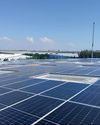Besides tunnel engineering, there are myriad kinds of systems created only for these marvels. Ventilation systems are just one.

Tunnel ventilation is critical across various verticals. Infrastructure players who build tunnels are required to ensure an adequate air quality, control the spread of smoke in case of fire, or reduce temperatures to acceptable limits. The function of the ventilation relates to the type of tunnel in question. Vehicular tunnels (road, rail and metro) generally require high air quality during normal operation and smoke control in case of fire, while cable tunnels require cooling, smoke control and a certain amount of air exchange. Mine tunnels and station tunnels also require adequate ventilation for physiological, cooling and smoke control requirements.
Tunnels are constructed to ease the transportation of people and materials rapidly, smoothly and in a shorter time than going around via a longer and usually steeper land route. Tunnels have been in existence for centuries. It is however only in more recent times that comfort, safety and enhanced traveler experience have become aspects of tunnel design, construction and operation.
THE SPECIFICS
This story is from the September 2018 edition of Construction Week.
Start your 7-day Magzter GOLD free trial to access thousands of curated premium stories, and 9,000+ magazines and newspapers.
Already a subscriber ? Sign In
This story is from the September 2018 edition of Construction Week.
Start your 7-day Magzter GOLD free trial to access thousands of curated premium stories, and 9,000+ magazines and newspapers.
Already a subscriber? Sign In

ASK PROPERTY FUND, KREEVA, AND SPRE COME TOGETHER For a residential project
ASK Property Fund, Kreeva (the real estate arm of Kanodia Group) and Shapoorji Pallonji Real Estate have announced joint development of a residential project in Sector 46, Gurugram, with a joint initial investment of Rs 270+ cr. Spread across 1.74 acres, the project shall generate top-line revenues exceeding Rs 1,200+ crore over the next five years.

SWREL BAGS GUJARAT SOLAR PV PROJECT Will include O&M
Sterling and Wilson Renewable Energy (SWREL) has received LoI for a new order totaling approx. Rs 1,200 crore in Gujarat.

HOW RICH PEOPLE ARE MAKING THEIR MONEY
Dr Prashant Thakur, regional director & head, research, Anarock Group, highlights some USPs

THE SURGE OF PLOTTED DEVELOPMENT IN REAL ESTATE
Rohit Cariappa, director, sales & CRM, Assetz Property Group, on some trends

BRIGADE CITRINE WILL BE INDIA'S FIRST NET-ZERO RESIDENTIAL DEVELOPMENT
Brigade Group has launched Brigade Citrine, a residential project that sets new benchmarks in sustainable living.

FAR-SIGHTED?
Industry veterans look into the crystal ball and voice their thoughts

TREADING CAREFULLY
Off-the-road tyres are not being taken lightly anymore

IN A LEAGUE OF ITS OWN
bauma ConExpo India 2024 held its own with cutting-edge technologies and innovations

INFRA COMPANIES
In a significant move to alleviate traffic congestion and enhance connectivity, the Mumbai Metropolitan Region Development Authority (MMRDA) appointed contractors for key road infrastructure projects in Mumbai and Thane.

Global standards
Glass Wall Systems has been revolutionising the facade industry